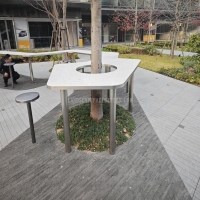Welcome to the website for landscape facilities products and knowledge.
How does the table’s design ensure it remains lightweight yet durable?
Modern table design represents a remarkable fusion of lightweight engineering and durable construction, achieved through several key technological innovations. The foundation of this balance begins with advanced material selection, where aircraft-grade aluminum alloys and reinforced polymers create structures that are both remarkably light and exceptionally strong. These materials undergo rigorous testing to ensure they can withstand daily wear while maintaining their structural integrity over years of use.
The engineering brilliance extends to the table's structural design, where geometric optimization plays a crucial role. Engineers employ computational analysis to identify stress points and reinforce them strategically, while removing excess material from low-stress areas. This approach, known as topological optimization, creates tables that are up to 40% lighter than traditional designs without compromising strength. The strategic placement of support beams and the implementation of honeycomb internal structures further enhance this weight-to-strength ratio.
Manufacturing techniques contribute significantly to the durability aspect. Many premium tables now feature monocoque construction - a technique borrowed from aerospace engineering where the table's surface and frame are formed from a single piece of material. This eliminates weak points typically found at joints and connections, dramatically increasing the table's lifespan. Additionally, advanced joining methods such as robotic welding and structural adhesives create bonds that are often stronger than the materials themselves.
Surface treatments and protective coatings provide the final layer of durability. Nanotechnology-based sealants create microscopic protective barriers that resist scratches, stains, and moisture penetration. These coatings are measured in microns, adding negligible weight while providing substantial protection. The combination of corrosion-resistant materials and these advanced coatings ensures the table maintains its appearance and functionality even in challenging environments.
The integration of smart design elements further enhances both lightweight characteristics and durability. Many contemporary designs feature hollow-core construction with internal ribbing, providing exceptional stiffness with minimal material usage. Edge reinforcement and corner bracing systems distribute weight and impact forces evenly across the entire structure, preventing localized stress concentrations that could lead to failure.
Through this multi-faceted approach combining material science, structural engineering, and advanced manufacturing, modern tables achieve what was once considered impossible: feather-light portability coupled with industrial-grade durability that stands the test of time and use.
Related search:

Recommendation
An outdoor bar counter with stainless steel and terrazzo materials in an irregular shape